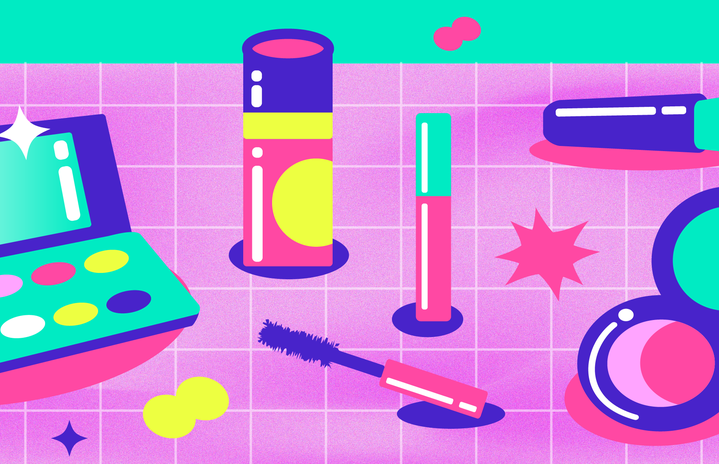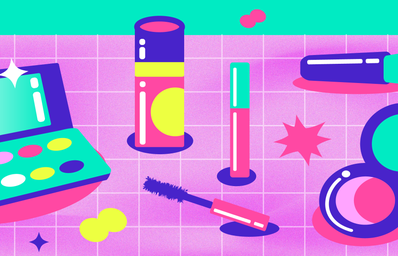It’s easy to post a rainbow on social media during Pride Month. It’s harder to develop a strategy that provides continuous support to the LGBTQ+ community for the other 11 months of the year.
Fluide, a Brooklyn-based company that creates “vegan, cruelty-free and paraben-free cosmetics designed for all skin shades and gender expressions,” is an emblem of inclusivity. On Instagram and TikTok, there are a multitude of voices leading makeup tutorials or posing when already glammed up. Their representation of people across various races and gender identities demonstrates a clear DEI (diversity, equity, and inclusion) strategy.
But what sets Fluide apart from other beauty companies is the depth that dwells behind a seasonal nail polish sale or new lip gloss launch. They are proactively maintaining and building upon their communities, giving their audience a voice and a safe place to be themselves.
While some beauty companies may use social media to show their solidarity with certain groups in a responsive manner, like during the aforementioned Pride Month or during the Black Lives Matter movement, the marketing team at Fluide is putting in the work to stay connected to those communities after those timely windows vanish.
How can a social media manager, who has enough on their plate already, plant seeds so that their audience feels consistently seen and represented?
I spoke with Alec Sutherland, marketing director at Fluide, about the efforts he makes to empower people to be their most authentic selves. They have been in this position for a year and a half and are responsible for managing the company’s email, social media, advertising, events, and PR. Here’s what they had to say about their social media strategy.
Note: The following responses have been recorded from a Google Meet call and have been edited for length and clarity. Fluide announced that it was closing its doors five days after this interview, but their social media platforms can still be viewed at this time.
Some people may say that brands only respond to issues of race, gender, or sexuality in an obligatory way, simply because everyone else is. What efforts do you make to foster a genuine community over time?
Earlier in the spring for Trans Day of Visibility, we did a shoot where we brought in six models and had them honor trans icons. We also hired a trans artist to make collages for them to stand behind. It wasn’t very sales-y, and we didn’t drop a product with it. It was just about something that was generative, creative, and community-led. It was something that was special for all of us to partake in, even outside of “we have to sell lipstick this month.”
Another huge thing is just making sure that we’re employing trans and queer people across the board. Of our executive suite, 66% are trans-identifying. It’s harder for members of the LGBTQ+ community to be employed in corporate settings, so we want to make sure that we’re not only fostering an environment where people can thrive, but also setting them up for success, should they want to work at a L’Oreal or an Estee Lauder later in their career. We’re giving them the fundamentals to be able to go into those spaces.
Growing up, did you feel like you were represented in advertising and marketing, specifically in the beauty sector? In other words, how much of your personal experience do you bring into the work you do now?
My mom is from Thailand and my dad grew up in France, so I have a cross-cultural and biracial identity. I never saw myself really reflected in beauty campaigns. I remember being in high school and doing our musical theater extracurricular, and we had to have stage makeup. I had a dirty Ziploc bag with Covergirl concealer and one mascara. That was such a huge deal, but I still carried a lot of shame in wearing it.
The turning point, which you’ll probably laugh at, was seeing James Charles and his Covergirl campaign. I was in early college or late high school, but it was really pivotal. He’s kind of a controversial figure, but he did a lot of legwork for men in beauty and male-bodied people in the beauty space.
To this day, I don’t see as many drag queens or gender-expansive identities represented. I feel like the tides are slowly turning, but as a consumer, I don’t feel like the brands that I shop at do a great job of representing myself.
Let’s widen the scope beyond Fluide for a minute. What’s a mistake you’ve seen a lot of brands make when it comes to trying to create an inclusive social media presence? On the flip side, who do you think is getting it right?
At a really high level, I think that the bigger companies really do feel like they’re checking off a box. Even if campaigns aren’t really related to gender diversity or gender identity, they feel like they’re disconnected.
You can also tell, like with a lot of Pride Month messaging, that there weren’t really any queer people involved with the decision. You’ll see copy that doesn’t make sense, or a lot of things that I would put under the umbrella of inauthenticity: people trying to make decisions or reach a community that they’re not a part of. They’re trying to co-op an aesthetic instead of having a fluency in saying, “Okay, here’s how we should approach this.”
There are also disconnects between how products are used. People who wear a ton of makeup, like drag queens, sex workers, or performers are not well-represented in what we see in marketing. I’ve never seen a product marketed towards somebody who is performing in drag, which is a huge area expanding economically in the United States. There’s a huge gap.
On the flip side, I see success in niches. Patrick Ta, an Asian-American makeup artist who has his own makeup line, is able to speak to people of an Asian identity super well. He creates a product that is able to appeal to a consumer who is looking for dewy, glossy skin.
Patrick Starr, a YouTuber who also has a beauty line, has a great understanding of the products that drag queens are using. He knows that they are wearing a ton of makeup and that they need a good balm at the end of the night to take it off. That’s a great fit. It’s very authentic. Patrick Starr understands who’s using the product.
Milk Makeup is also hitting it out of the park. They create really good, really wearable stuff. It’s able to reach a lot of people while also understanding affordability, product versatility, shelf life, and accessibility.
Do you have any tips for social media professionals who are looking to more consciously build their DEI strategy?
The biggest thing is finding somebody in the community that you want to reach and employ them. If we say, “we want to sell products to drag queens” then we’re going to hire a drag queen, hire a drag queen photographer, and hire drag queen models. It’s about understanding the audience at every point in the chain.
It’s not about being narrow and saying “only drag photographers can shoot drag products,” it’s about saying “this person understands the community and they’re going to be a voice for that.” They’re going to be able to expose us to things that we’re not aware of.
On social media, a great way of doing that is by doing Instagram takeovers or finding graphic designers who exist in the communities that you want to reach. Whether it’s a question on an Instagram story or an open forum, always create opportunities that allow for conversations to happen.
It’s also important to remain adaptive and flexible. Even though social media hasn’t been around for that long, people feel like we’ve done things a certain way or we want things to look a certain way. Sometimes you have to scrap the playbook. Especially with young digital companies, that’s the only way to remain fresh: let go of what you’ve done before, and ask yourself “what else can we do?”
Where do you see your career taking you?
Being a voice for the community has been a through line of my career. Anything that I can do to allow people to feel less alone is a huge component of what I do.
I was a really shy kid with that little makeup bag, and I never felt like I could even talk about wearing makeup to school, even though I did. I’d love to be able to turn the tide for a younger generation, so maybe some kid can come to school in a full face of makeup and it would just be totally normal. When that day happens, I will be ecstatic.
Can’t get enough of HC UMass Amherst? Be sure to follow us on Instagram, listen to us on Spotify, like us on Facebook, and read our latest Tweets!


